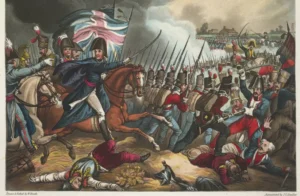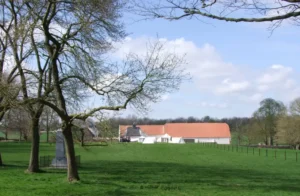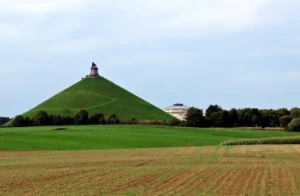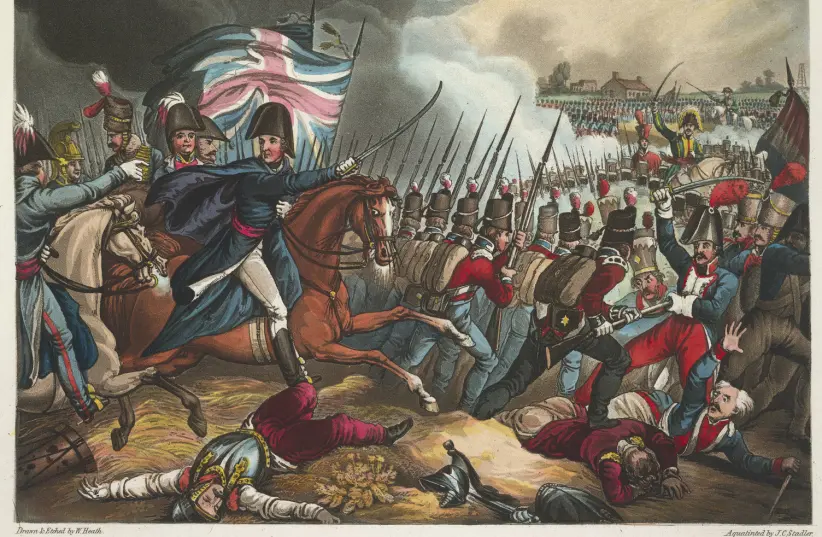A new study examines the possible cause as to why no mass graves for the thousands of casualties from the Battle of Waterloo have ever been discovered.

The bones of soldiers killed during the Battle of Waterloo may have been stolen and sold as fertilizer, offering an explanation as to why virtually no remains of some 50,000 casualties have ever been discovered.
The possibility that the bones of the deceased were sold across Europe as fertilizer was raised in a new study published by Professor of Conflict History and Archaeology Tony Pollard in the peer-reviewed Journal of Conflict Archeology on June 18, exactly 207 years to the date of the historical conflict.
The study examines various firsthand accounts of the aftermath of the battle, recorded in memoirs, journals and artwork, to try and understand where the thousands of casualties of the battle that ended a war spanning over two decades were disposed of.
Firsthand accounts from Waterloo
One such account was recorded by James Ker, a Scottish merchant living in Brussels, who visited the battlegrounds in the days immediately after the fighting. In his written observations, Ker describes holding men in his arms as they died, indicating that neither the wounded nor the dead, had been removed from the battlefield at that time.
Furthermore, an account from Newman Smith who visited the battlegrounds on June 22, reports having seen “numerous wagons removing the wounded,” although many still remained untouched in the field.

However, as Pollard continues examining the firsthand accounts, they begin to shift from reports of the wounded and dead lying exposed to the elements to reports of the deceased having been buried or otherwise disposed of, albeit somewhat hastily.
In an account by Sir Walter Scott in August of 1815, he writes, “All ghastly remains of the carnage had been either burned or buried, and the relics of the fray which yet remained were not in themselves of a very imposing kind.”
However, later on, he adds that “the stench in several places of the field, and particularly at La Haye Sainte and Hougoumont, was such as to indicate that the former operation had been but hastily and imperfectly performed.”
“All ghastly remains of the carnage had been either burned or buried”
Sir Walter Scott, 1816
Scott’s account, together with similar descriptions from writer Charlotte Eaton and artwork by James Rouse, pieces together a picture of mass graves in which the bodies of some 13,000 fallen soldiers were buried, as well as piles of ashes indicating the burning of bodies that could not be buried.
The locations mentioned by Sir Walter Scott of La Haye Sainte and Hougoumont appear repeatedly in illustrations of the battlefield, including in an 1816 illustration by Robert Hills, and a series of sketches by James Rouse published in 1817, all of which are examined by Pollard in his research.
However, despite the vast array of firsthand accounts depicting the burial and disposal of thousands of bodies, very little evidence has ever been found of these mass graves or any of the bodies said to have been buried in them.

Why have no remains ever been found?
Over the years, various archeological excavations have been carried out at the site of the Battle of Waterloo, and yet almost no evidence of graves has ever been discovered. In 2015, a parking lot thought to be a likely candidate for the location of a grave site was examined after a ground-penetrating radar carried out by Tim Sutherland detected various anomalies indicating disturbances beneath the concrete.
However, no evidence of a mass grave was found, not human remains or any indication of a pit having been dug. While some attribute this to either the location of the grave being further south than suggested in the painting depicting it, or even to the painting being merely an artistic creation, Pollard offers an alternate possibility as to why no evidence was found.
In the section of the research entitled “Removal of burials,” Pollard writes: “Artistic license and hyperbole over the number of bodies in mass graves notwithstanding, the bodies of the dead were clearly disposed of at numerous locations across the battlefield. It is somewhat surprising then that there is no reliable record of a mass grave being encountered over the last century and more.”
To this end, Pollard turns his attention to a theory that is often speculated about but rarely thought probable – the use of human bones as fertilizer.
According to Pollard, in the two decades following the Battle of Waterloo, “European battlefields provided a convenient source of bone that could be ground down into bone-meal,” which he explains was seen as one of the most effective forms of fertilizer prior to the discovery of superphosphates in the 1840s.

A report by an unknown author published in 1822 indicates the existence of such a market, stating: “It is estimated that more than a million bushels of ‘human and inhuman bones’ were imported from the continent of Europe into the port of Hull,” before describing the process in which they were reduced to a fine powder, resulting in a product that makes “better manure than almost any other substance [could produce.]”
Additional sources also refer to this industry, including an article published in the London Observer in 1822, an article in the London Spectator in 1829, and records from Black’s Morayshire Directory stating that “309 tons of bones were landed at Lossiemouth” in 1862. Yet despite this, the idea that human bones may have been used for fertilizer has often been met with “an air of urban myth,” writes Pollard.
But why Waterloo?
If this theory is correct, the question of why, and how, grave robbers choose to take bones from Waterloo arises.
Pollard offers several explanations to this end.
First, in answer to why Waterloo was chosen, he writes that the primary target of bone-seeking operations would be mass graves, or “those with enough bodies in them to merit the effort of digging the bones.” Therefore, sites such as the Waterloo battlegrounds, where thousands of bodies were said to have been buried, would have been an ideal choice for these people.
And, as for how they found the mass graves, Pollard explains that “local people would undoubtedly be important sources of information on the location of mass graves, many of them having vivid memories of the burials taking place, perhaps after participating in the process themselves.”
Additionally, he adds, early guidebooks in circulation at the time may have detailed the location of the mass graves and essentially served as a treasure map for bone seekers, leading them to the exact location they were seeking.
Continuing the search
Summarizing his findings, Pollard states that “on the basis of these accounts, backed up by the well-attested importance of bone meal in the practice of agriculture, the emptying of mass graves at Waterloo in order to obtain bones seems feasible, and the likely conclusion is that.”
“On the basis of these accounts, backed up by the well-attested importance of bone meal in the practice of agriculture, the emptying of mass graves at Waterloo in order to obtain bones seems feasible, and the likely conclusion is that”
Tony Pollard
However, not satisfied with merely providing a theory as to what happened to the casualties of Waterloo, Pollard will be leading an extensive geophysical survey of the Waterloo battlegrounds that is expected to last several years.
“If human remains have been removed on the scale proposed then there should be, at least in some cases, archaeological evidence of the pits from which they were taken, however truncated and poorly defined these might be,” he explained.
“Covering large areas of the battlefield over the coming years, we will look to identify areas of previous ground disturbance to test the results of the source review and distribution map, and in conjunction with further documentary research and some excavation will provide a much more definitive picture of the fate of the dead of Waterloo,” Pollard added.

